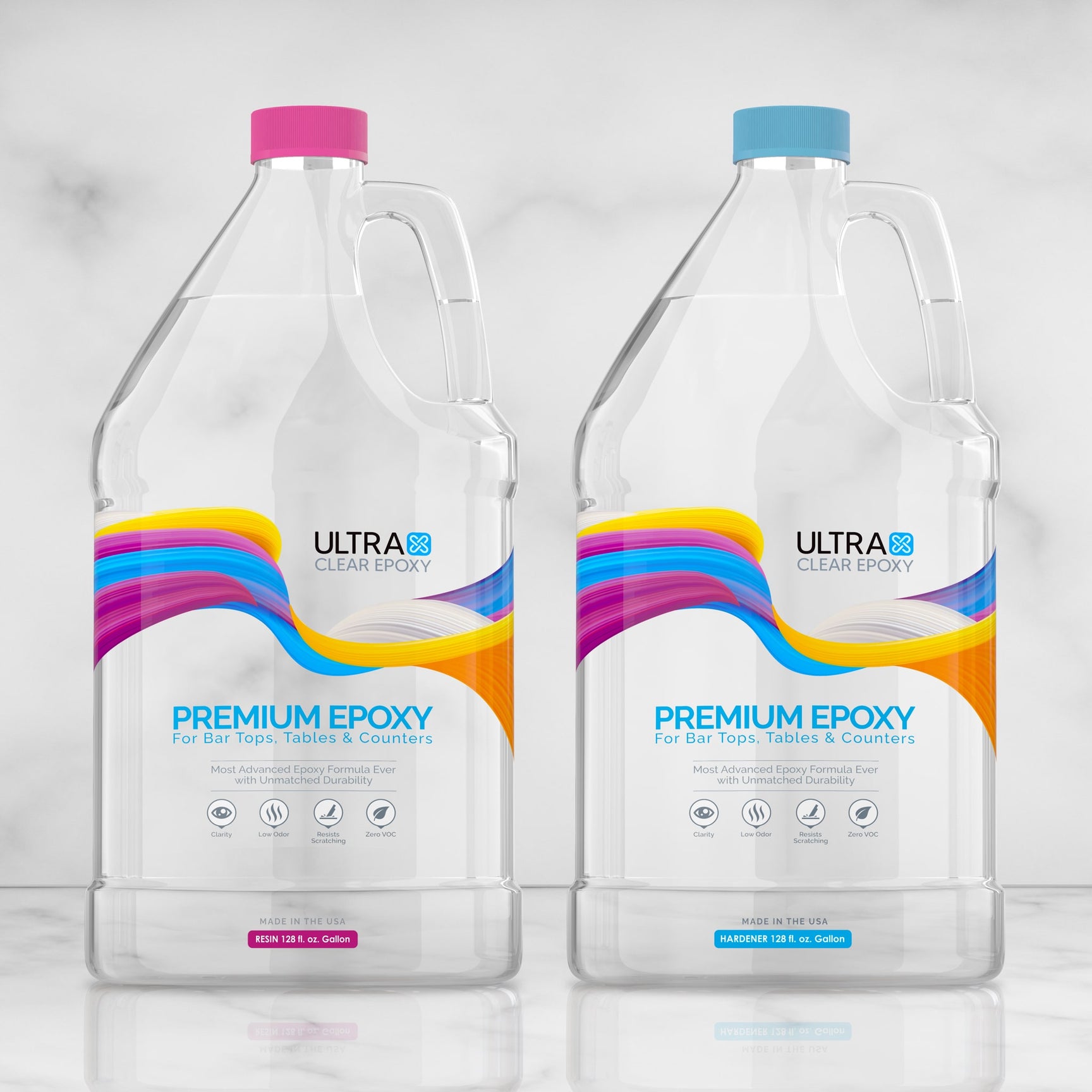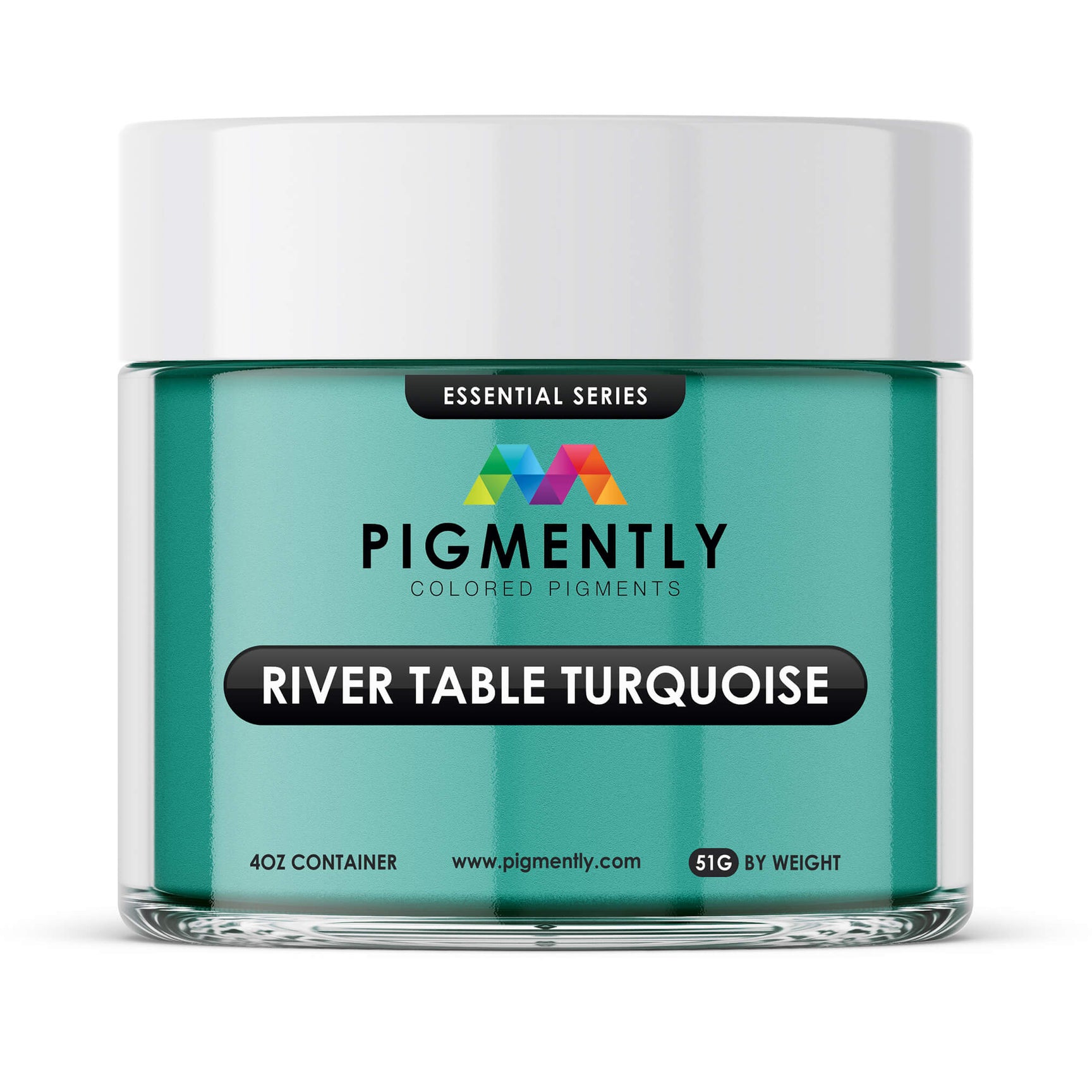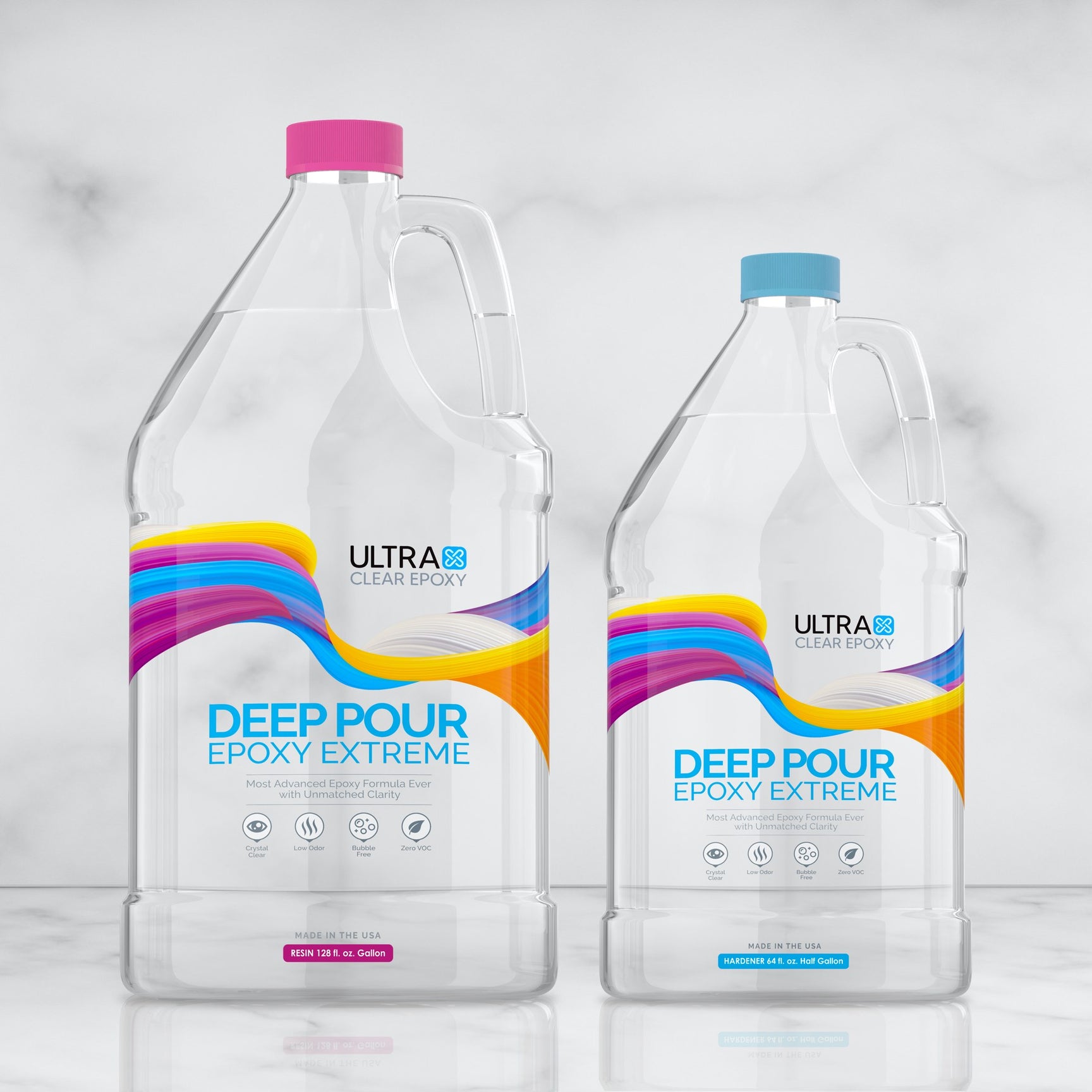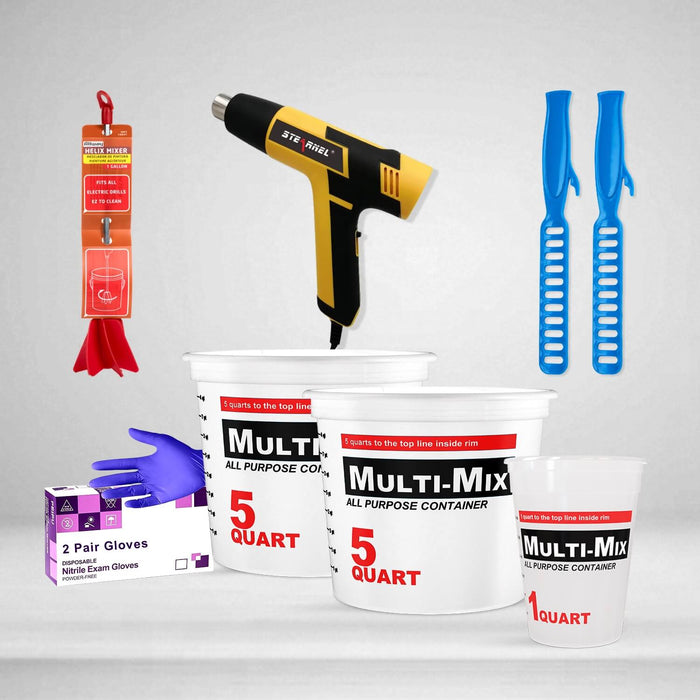If you're new to epoxy and are considering it for a large project like a countertop, bar top, or table top, you'll naturally want to know what its limitations are.
Learning that it's a type of plastic may prompt questions about how it well handles high heat, since plastic as a category covers a diverse range of polymers, each of which has a unique peak temperature it can withstand.
In this article, we'll be explaining where table top epoxy lies within this range and how you can avoid potential heat damage from high temperatures outside the safe range of epoxy.

Table top epoxy holds it own under high heat
Our UltraClear Table Top Epoxy has an approximate heat limit of 135°F. This means that it would begin to receive heat damage once enough heat energy has transferred into it to raise its temperature past that point.
For example, heated cooking pots or baking dishes, fresh from the stovetop or oven, will likely remain above this temperature limit for a short while after removing them from their cooking heat source.
That may seem low, but is it really?
Perhaps you see that number and think it appears a bit low. After all, they say granite can withstand 1200°F.
While this is true in a literal sense, granite countertops aren't simply granite. If they were, they'd all have a rough, abrasive, and porous texture that could absorb and retain pretty much any residue on it—Talk about a cleaning and maintenance nightmare!
Generally, you'll have a sealant on the granite countertop that has a much lower heat resistance and can be damaged similarly by hot pans and dishes.
In fact, it's not uncommon to use epoxy to coat a granite countertop, so either way you'll want to take precautions to avoid heat damage for any expensive countertop material.
To provide further context: At temperatures of 135°F, humans can receive irreversible burns after just a few seconds. This is a really high temperature that is hard to reach outside of intentional efforts, generally through cooking appliances or literal flames.
As long as you take the same care for your epoxy as you would for yourself or a guest, you should be completely fine.
Watch out for impossible claims by dishonest epoxy dealers.
In the epoxy industry, there are some resin dealers who make ludicrous claims on what their epoxy can handle. Often, the goal for them is to make sales from unsuspecting newcomers, then abandon the customer before they discover that the product doesn't hold up.
For example, we've seen some epoxy resins boast about heat resistance to 500°F—a literal impossibility. To dispel some of these dishonest claims, we've released our own guide, available freely to anyone curious about epoxy resin.
Our free ebook, The Ugly Truth About Epoxy Resin: What Companies Don't Want You to Know, discusses many of the lies being spread by shady vendors about their products. With this book, you'll learn how to spot these lies and avoid shoddy epoxy products.

Okay, but how can I prevent this damage?
Preventing heat damage is not difficult at all.
For pots, pans, and hot dishes, simply use trivets or pot-holders. These are items that can be made from different materials—wood, fabric, silicone, etc.—and will protect your epoxy surface from heat damage.
Coasters made from these same materials will often provide the same effect and are intended for drink shaped items like mugs and glasses.
How do trivets/pot-holders prevent heat damage?
Without getting too technical, what's happening here is that the materials these items are made of are all poor conductors of heat. This is useful, as it means they won't transfer heat from one location (e.g., a heated pot) to another location (e.g., an epoxy countertop).
To get just a bit more technical:
- Heat is the transfer of energy, from a warmer place to any cooler place adjacent to that energy. Ultimately, this will continue to happen until everything is at an equal temperature around it. This status is called thermal equilibrium.
- Air is made of molecules in a gas-state, which is a state of matter wherein the molecules remain relatively far apart from each other most of the time and are not consistently arranged. This means that the molecules themselves don't come into contact with each other as much as those of liquid and solid states.
- Without contact, molecules cannot easily transfer heat. Since air is in a gas-state and heat requires contact, air is a poor thermal conductor.
So, back to the pot-holders: Why are they poor conductors of heat?
Well, the materials they're made of contain pockets of air. Usually this is due to being porous or loosely woven. Each of these materials also has unique characteristics that are beyond the scope of this article.
For a quick example, though, let's look at wood.
Wood at a macroscopic level is not a homogenous substance, meaning one single state of matter, such as a solid. Instead it is considered heterogenous, because its makeup consists of multiple states of matter. What's relevant here is that it is both solid and gas-state at different points.
Up very close, wood looks like a lattice (criss-crossed framework) made of cellulose, and within that cellulose are little pockets of air. This air has no way to move about because it is sealed within the wood. As a result, wood has this natural insulator (air) which will only transfer heat at a very slow rate.
So a trivet or certain types of coasters made of bits of wood will have this trait which, in addition to a few other factors, enables it to be an excellent shield against heat when dry.
Interesting, but what if I get heat damage? Can I fix it?
Yes, though it may be troublesome.
If the damage is surface level:
- Sand the epoxy lightly to smooth out the blemishes.
- Wipe the epoxy surface with acetone.
- Wait 30 minutes, then apply a new seal coat to fill in the blemishes.
- Wait four to six hours, then apply a new flood coat.
If the damage is deep:
Unfortunately, an issue like this may require an almost full revamp.
- Sand the epoxy surface heavily; remove most of the flood coat, until you've cleared away all the damage and are left with a smooth surface.
- Wipe the epoxy surface with acetone.
- Wait 30 minutes, then apply a new seal coat.
- Wait four to six hours, then apply a new flood coat.
This will not work for every scenario, but it's a starting point for handling general heat damage, dependent on how deep and severe it is.
Additional Resources
We hope this article has been helpful. Below, we've placed some additional resources you may find useful:
- How does water affect epoxy? Is it waterproof? - An explainer on how water and moisture affect epoxy.
- Epoxy: Proper storage, shelf life, and preventing "yellowing" - Proper methods to storing epoxy and preventing yellowing.
Have questions? Want advice? Contact us!
If you have any questions about epoxy or related topics, or if you'd like advice on planning an epoxy project, please reach out to us at UltraClear Epoxy. Our epoxy experts are ready to assist!
You can contact us via phone or email here.
During business hours, you can also text chat online with one of our resin specialists by clicking the Help button at the bottom right of your screen.









